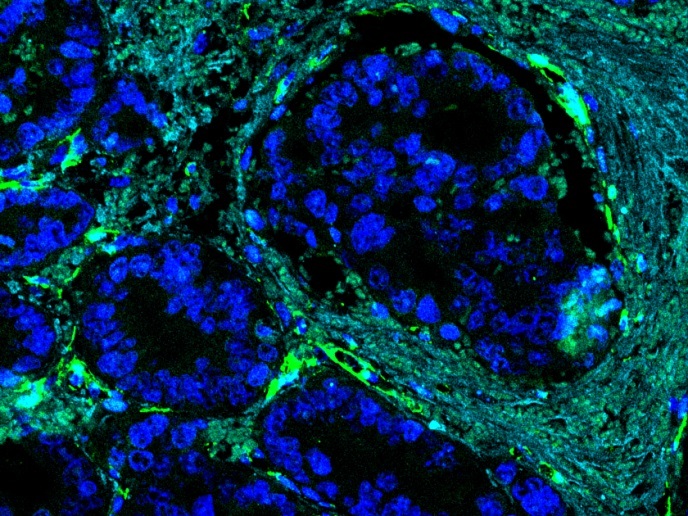New biomarkers of aggressive prostate cancers will benefit those with more benign forms as well
PCa is the second most common cancer in men behind lung cancer, and the fourth most common cancer overall. Currently, there is no reliable way to differentiate between relatively harmless and potentially life-threatening forms, so many men opt for aggressive treatments that can have serious risks and side effects. With the support of a Marie Skłodowska-Curie Action – Individual Fellowship, Sofia Karkampouna of the University of Bern working in the research group of George Thalmann and Marianna Kruithof-de Julio has identified novel biomarkers that may signal impending metastasis of aggressive PCa. This sets the stage for further characterisation that could lead to better prognostics, and eventually aggressive treatments only for aggressive cancers.
A ‘double’ metastasis model helps tease out cancer signals
The microenvironment surrounding a tumour (the stroma) consists of supporting structures such as connective tissue, vasculature, fibroblasts and immune cells. Stroma plays an important role in cancer development, progression and metastasis. “The main objective of STOPCa project was to determine whether the stroma of metastatic PCa contains specific gene expression patterns that differ from those of non metastatic tumours, and to understand the mechanisms of interaction between tumour and stroma,” explains Karkampouna. To untangle this complicated web of interactions, Karkampouna and her team relied on patient-derived xenograft (PDX) models and high-tech molecular methodologies. They implanted tissue from human PCa bone metastases into a different microenvironment in mice, under the skin. The stroma was thus contributed by the host organism, whereas the tumour cells were of human origin, allowing species specific discrimination. Researchers performed next generation RNA sequencing to simultaneously evaluate the tumour and stroma transcriptome from the same tissue sample. “To our knowledge, this is one of the first studies that has analysed species-specific transcriptomes using RNA sequencing as a means to correlate gene expression changes in a tumour with those in the stroma simultaneously and in an in vivo setting,” Karkampouna says. The team complemented this with a species specific proteomic analysis.
A complicated relationship with prognostic value
From the combined transcriptomic and proteomic analyses, the team identified the expression of ‘signature’ genes known to be associated with the bone metastasis stroma. These genes were induced in the stroma environment of the mouse host, suggesting that the PCa tumour may have induced osteomimicry in the stroma. In addition, the team found differences in response to androgens (hormones that stimulate PCa growth) between the tumour and the stroma, suggesting that a combinatorial drug treatment approach may be needed to control the androgen cues in the stroma. Karkampouna concludes: “The conservation of stroma PCa specific markers in the subcutaneous xenografts derived from patients supports the notion that the stroma/tumour microenvironment is dynamically altered by the tumour and may acquire ‘premetastatic’ features in preparation of metastasis to bone. This has the potential to yield information about the tumour stage and aggressiveness that we can use for prognostics, disease progression prediction and patient stratification according to risk of metastasis.” The team is currently validating the detection of such biomarkers in circulation. Better outcomes and quality of life could be around the corner for a growing number of people globally.
Keywords
STOPCa, stroma, PCa, metastasis, biomarkers, prostate, androgen, PDX, prostate cancer, patient-derived xenograft







